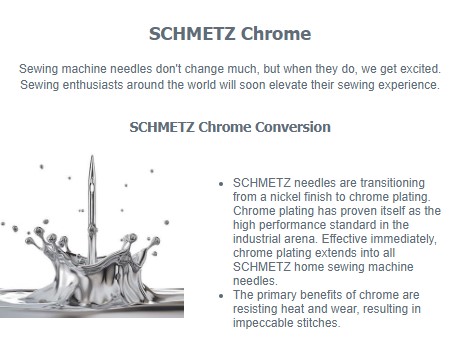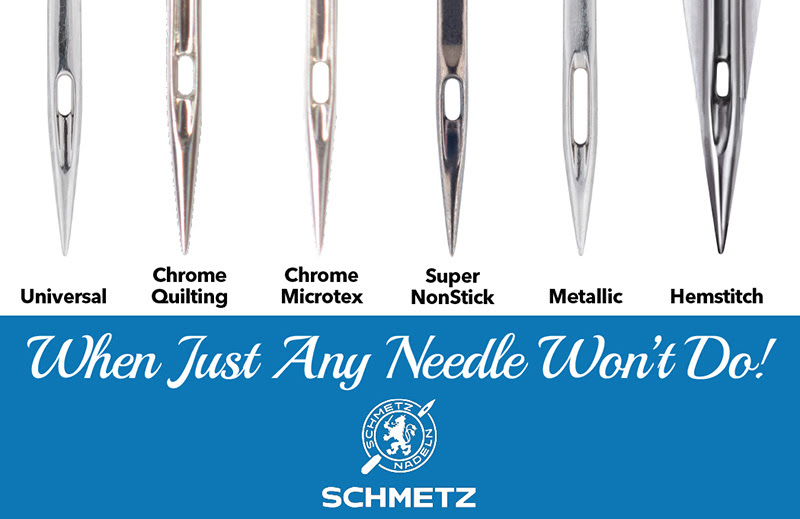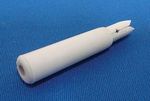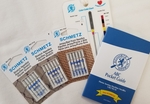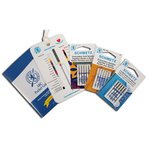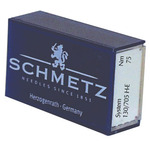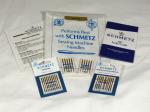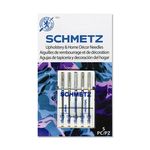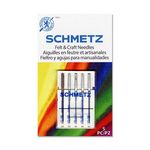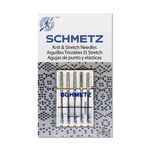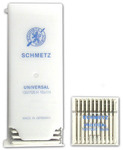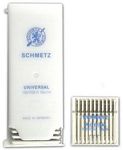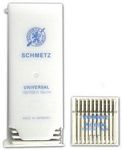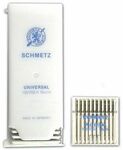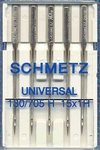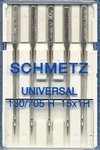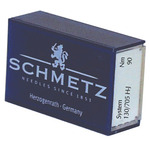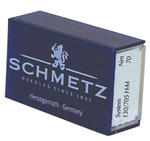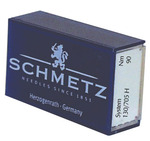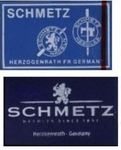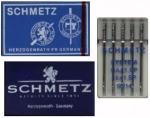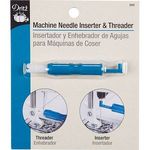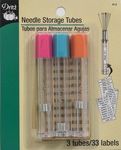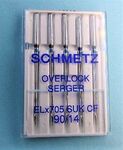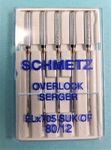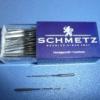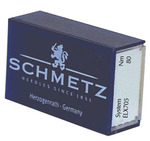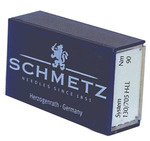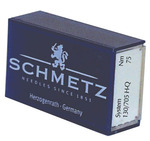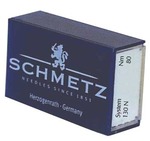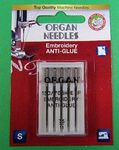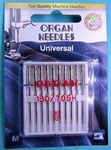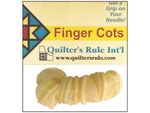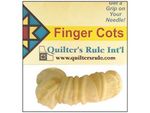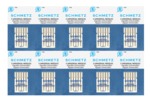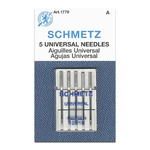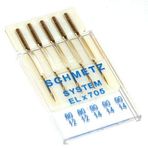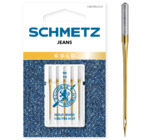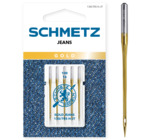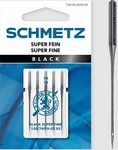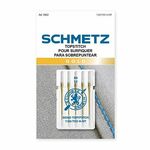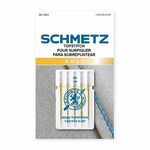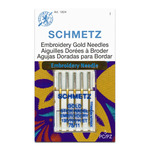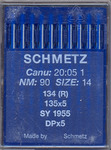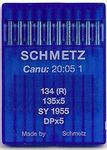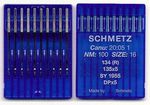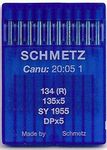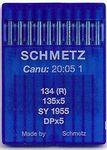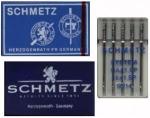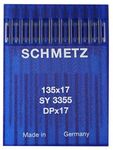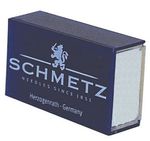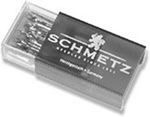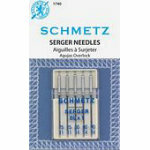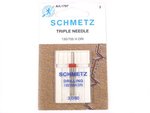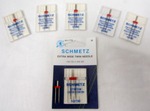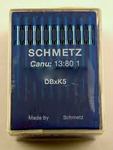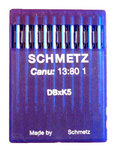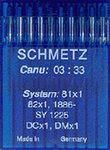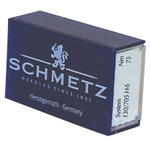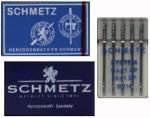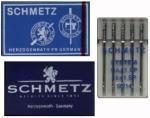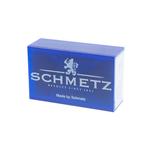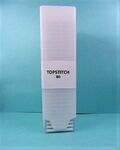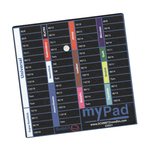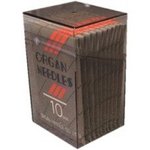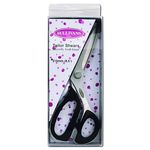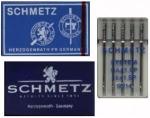 |
Schmetz Home Sewing Machine Needles |
"Absolutely best selection of sewing machine needles anywhere!!" Jean R, Facebook Other customer comments:
"SCHMETZ is the best!"
"SCHMETZ is the only brand of needle I use in my sewing machine."
"SCHMETZ quality is top notch."
"My sewing machine runs better with SCHMETZ needles."
"Great prices on Schmetz needles."
*Schmetz bulk sewing machine needles made in Germany come in boxes of 100 loose needles, not in packs of 5 which cost twice as much per needle. It is easier to get a needle out of Schmetz ergonomic sliding lid box, than to open a pack of 5 or 10 needles for one needle. Just ask our mechanics who change needles on all their sewing, embroidery and serger machine repairs everyday. We use the Schmetz sliding lid boxes, not packs of 5 or 10 which are also twice as expensive and harder to remove each needle. If you must have packs of of 5 or 10 in 100 quantity bulk prices, Organ is the only company that packages bulk needles in packs of 10 each.
All About Schmetz Sewing Machine Needles
Click Here to see how Schmetz Needles are Made
SCHMETZ Needles - Change the Needle. Rhonda Pierce, Marketing Director and Sewing Educator for SCHMETZneedles.com discusses SCHMETZ Household Needles and how often the needle should be changed. She also discusses why the needle should be changed.
How often should I replace my sewing needles? Machine needles should be replaced after a maximum sewing time of 8 hours. Replace needles more frequently when sewing synthetic fabric, appliqués or machine embroidery. This will avoid skipped stitches, fabric pulls and frayed threads. Machine needles are designed to break or shear off for the protection of the sewing machine hook mechanism, bobbin case, presser foot, or needle plate. If a needle bends or burrs, do not sew with it. When a machine needle breaks, it is a warning to check the following: ~The needle type and size is correct? ~Is the thread too thick or unsuitable for the needle size and application? ~Is the upper thread feeding freely? ~Are the thread tensions set too tight? ~Does the machine need cleaning? ~Is the correct presser foot fitted? ~Is the correct sewing technique being used? ~Is the fabric being pulled, pushed or dragged during sewing? ~Twin needles usually break due to excessive heat build up. Reduce speeds and avoid prolonged usage.
Thread breakage can be caused by resistance of thread going through the needle eye/size. A good rule of thumb is that thread should not take up more than 1/2 the space of or in the needle eye depending on thread texture. Thread a needle in your hand and let the needle slide down over the length of the thread. If there is too much resistance, it may show up as broken thread due to heat built up in higher speed sewing and/or just restriction and resistance in the needle eye which can cause thread to shred and break. There can be many more reasons for thread shredding and breaking, other than just matching correct needle eye size to thread size.
The needle is not a permanent machine part. Needles get dull from use. Needles are meant to be changed. Clues to Changing the Needle
- Shredding or broken threads -
- Skipped stitches -
- Puckered or damaged fabrics -
- Wiggly squiggly seams -
- Popping, clicking or clunking sound -
Schmetz ABC Pocket Buying Guide for Home Sewing Machines
Schmetz Domestic Needle Buying Guide
Schmetz Industrial Needle Chart
Schmetz You Tube Videos Channel Playlist, Six in All
What does needle size #90 mean? The number classification of a needle refers to the diameter of the blade (#90 means .9mm in diameter). The larger the number, the larger the needle's diameter of the blade. Larger needles also have a larger eye making them ideal for thicker threads. If a thread moves through an eye that is too small for the diameter of the thread, the thread may heat up, skip stitches, shred or break.


